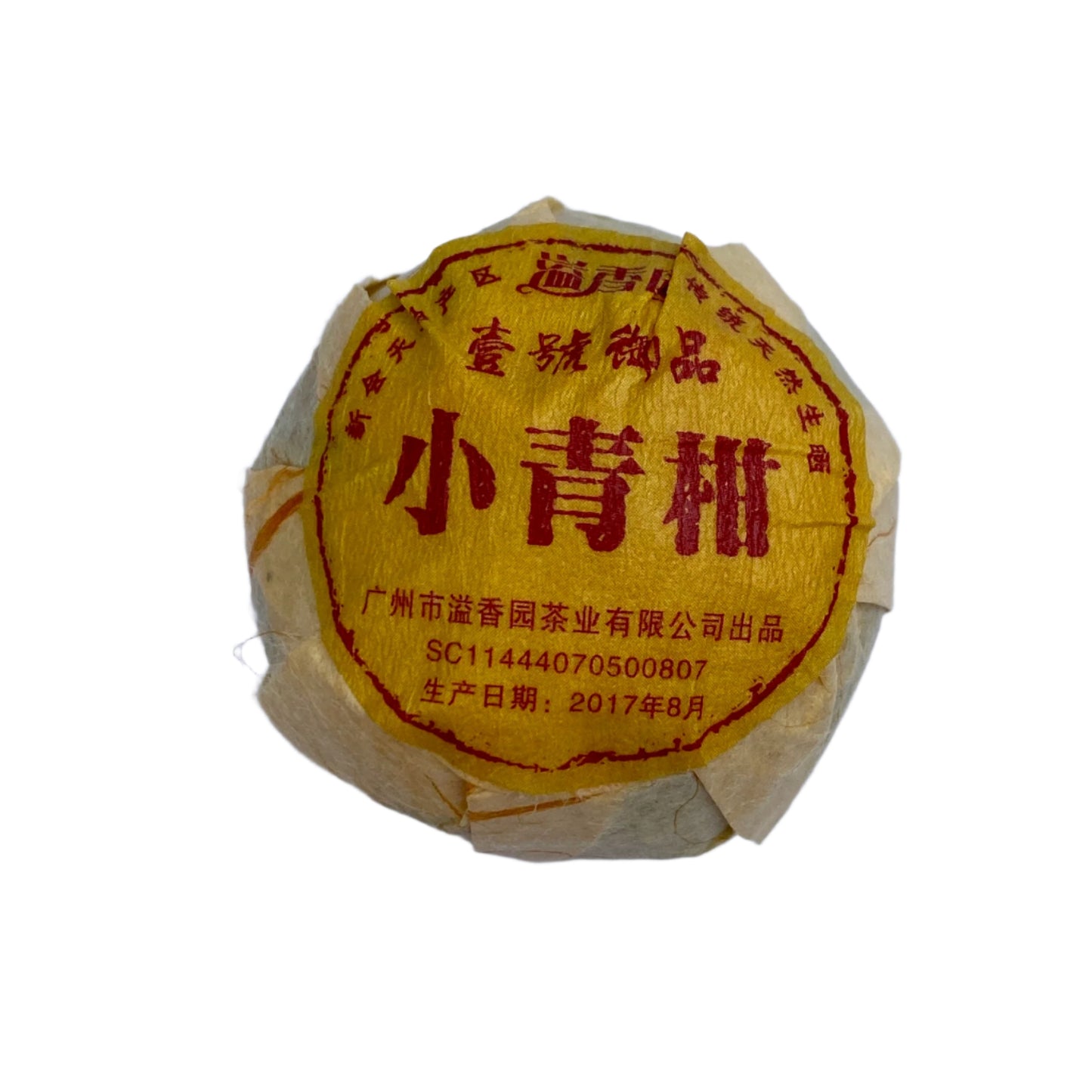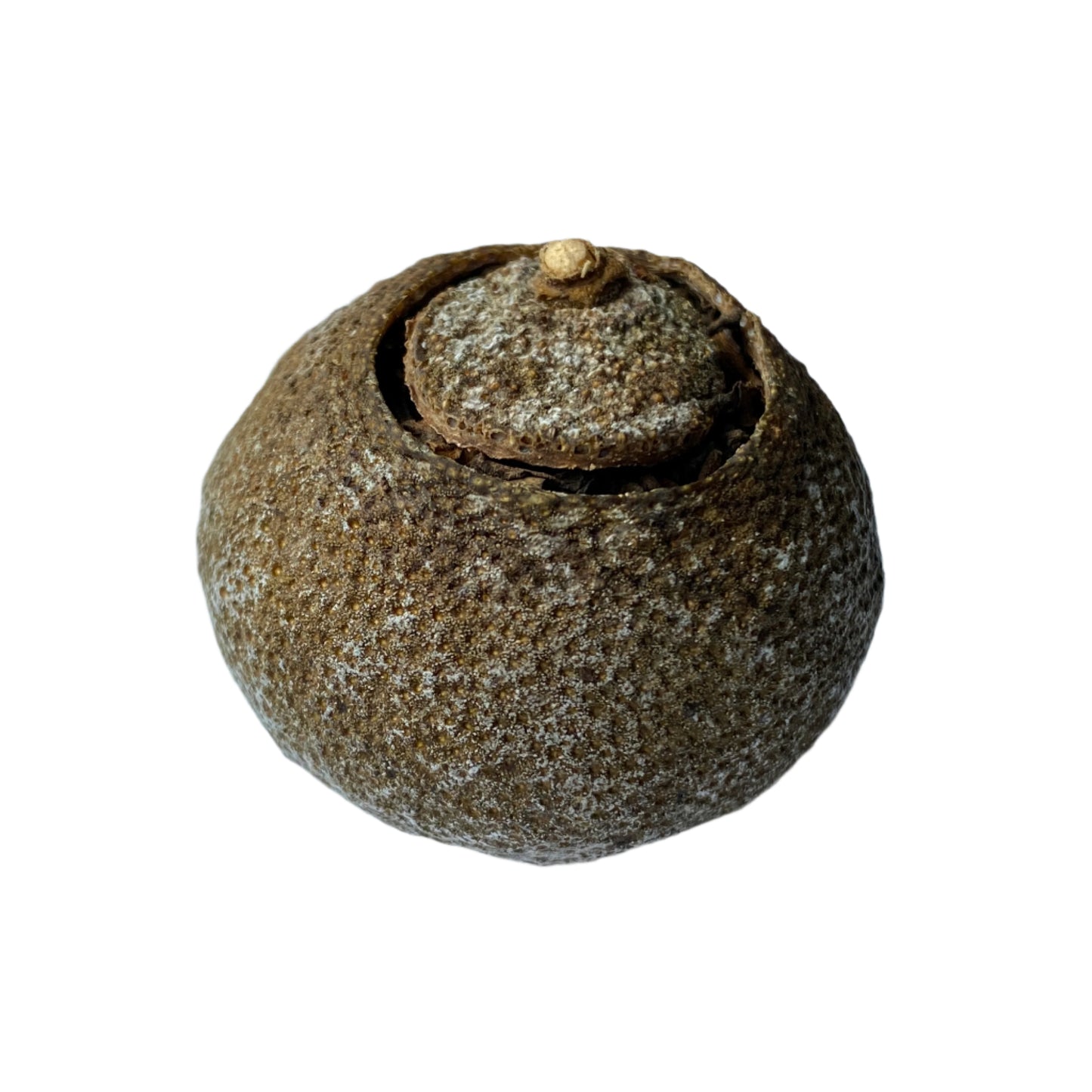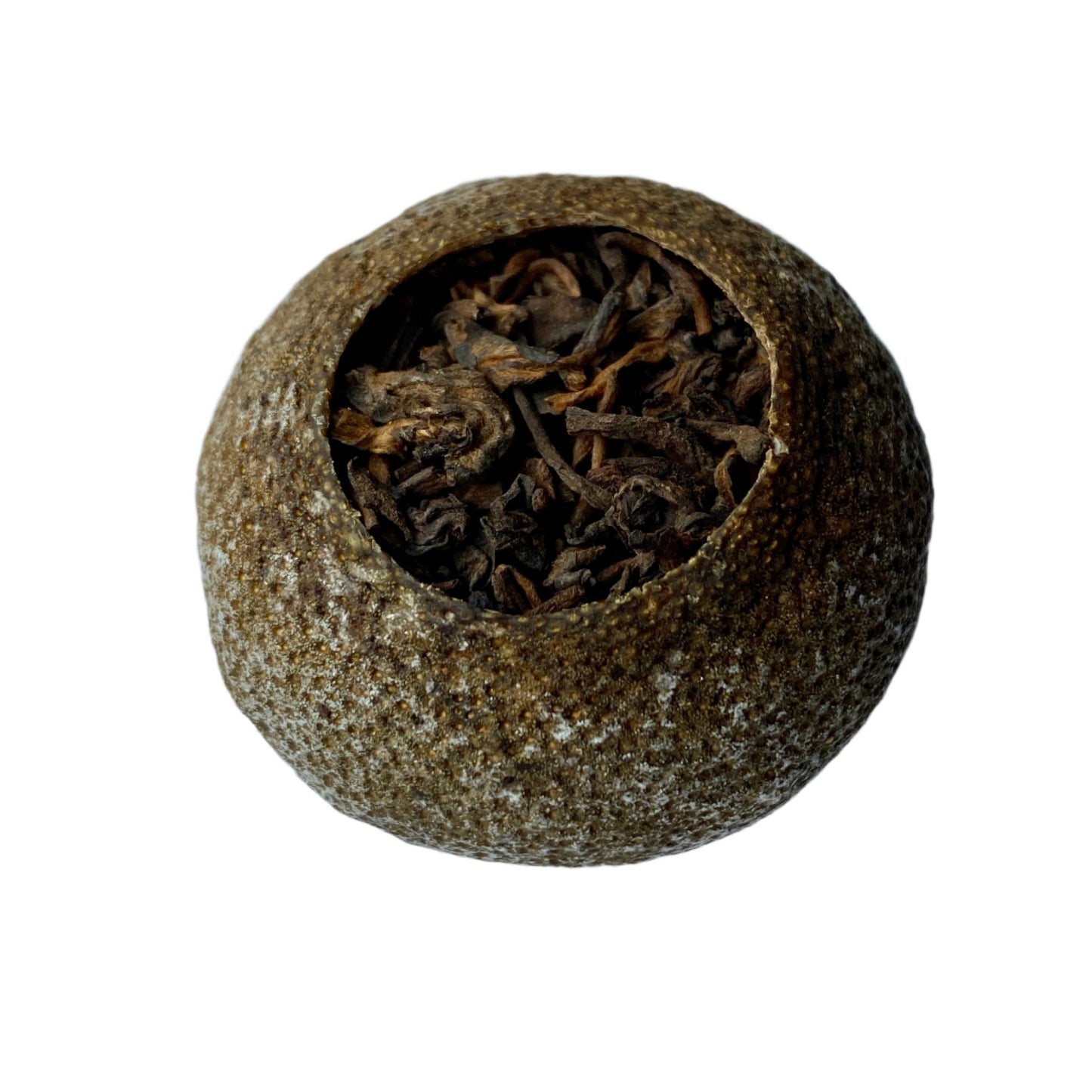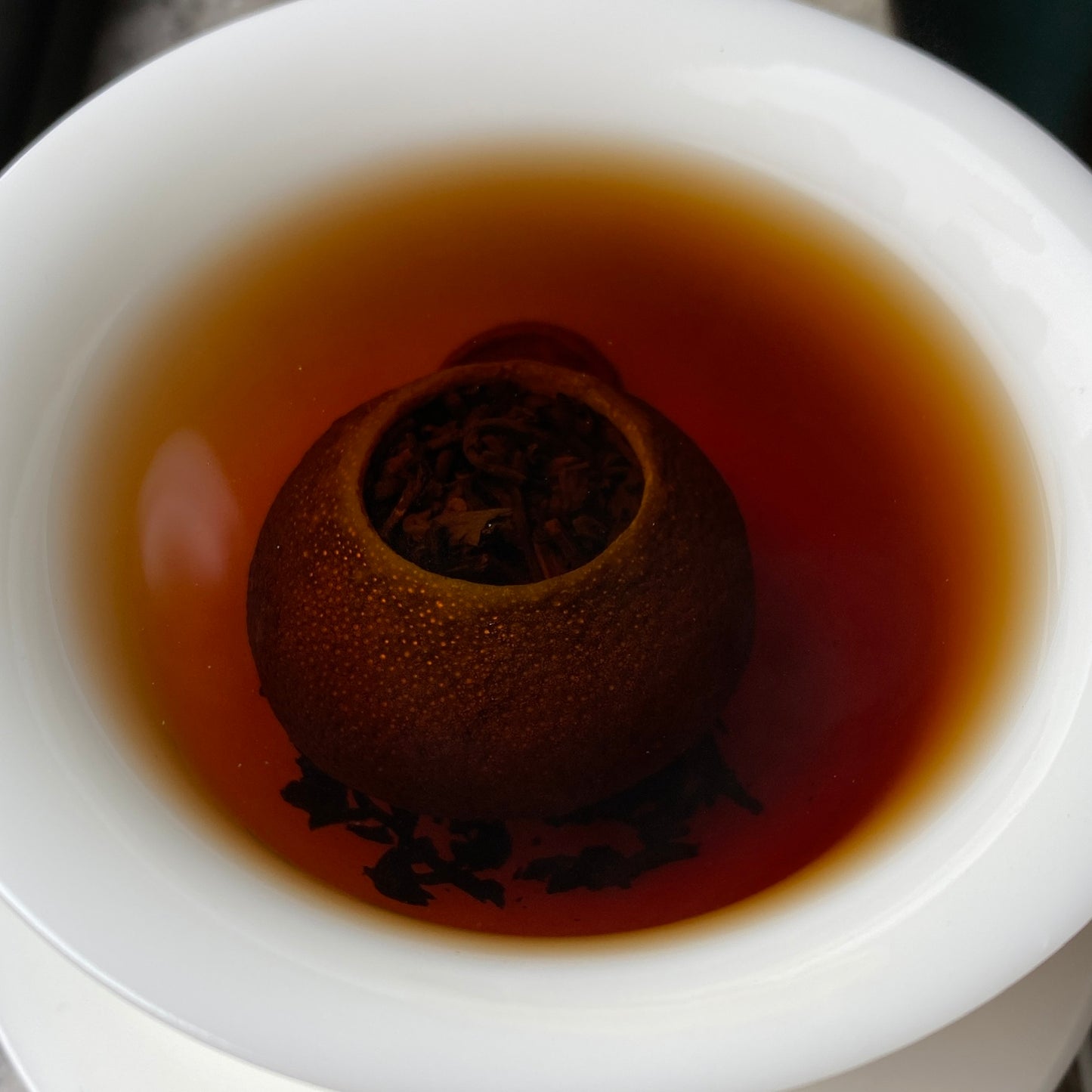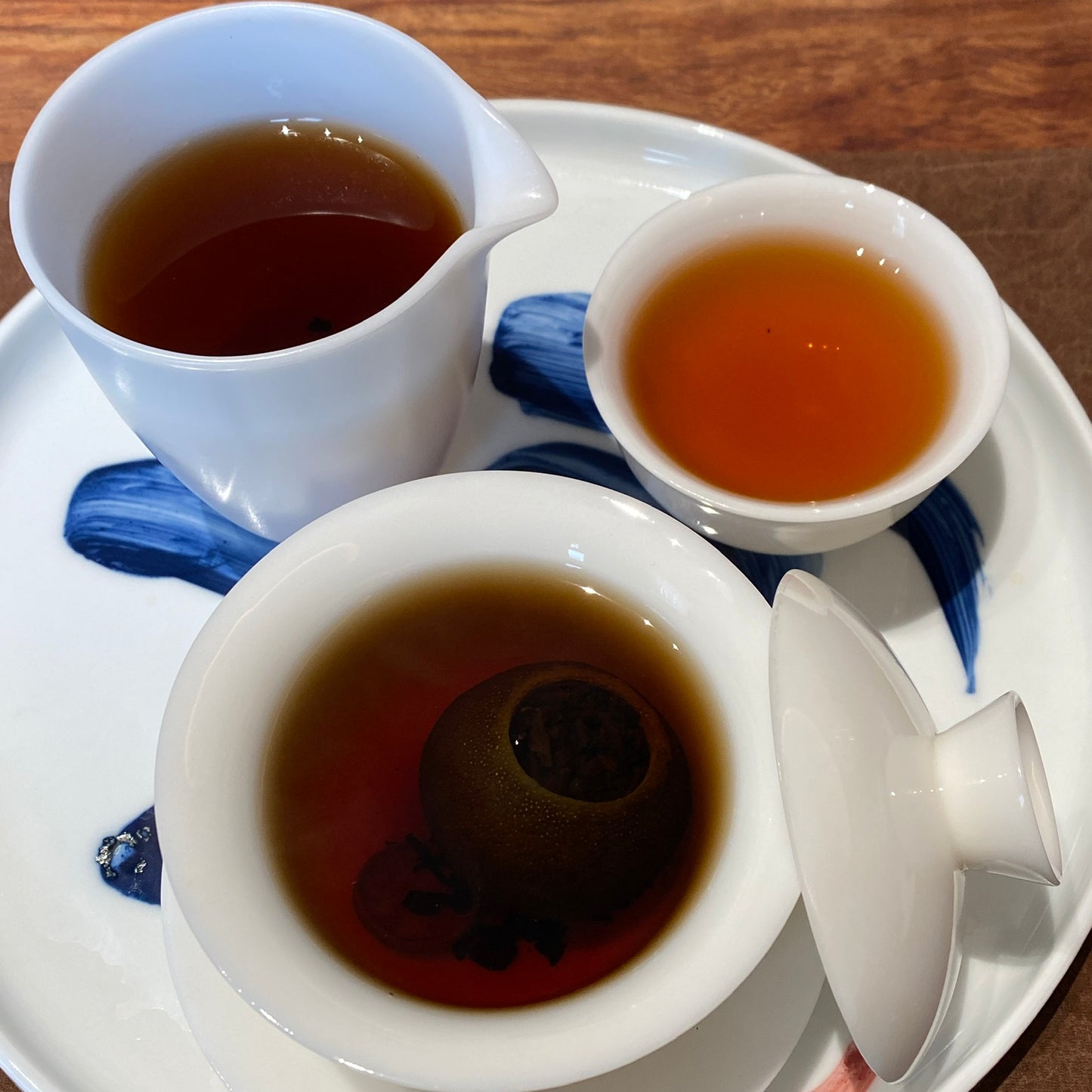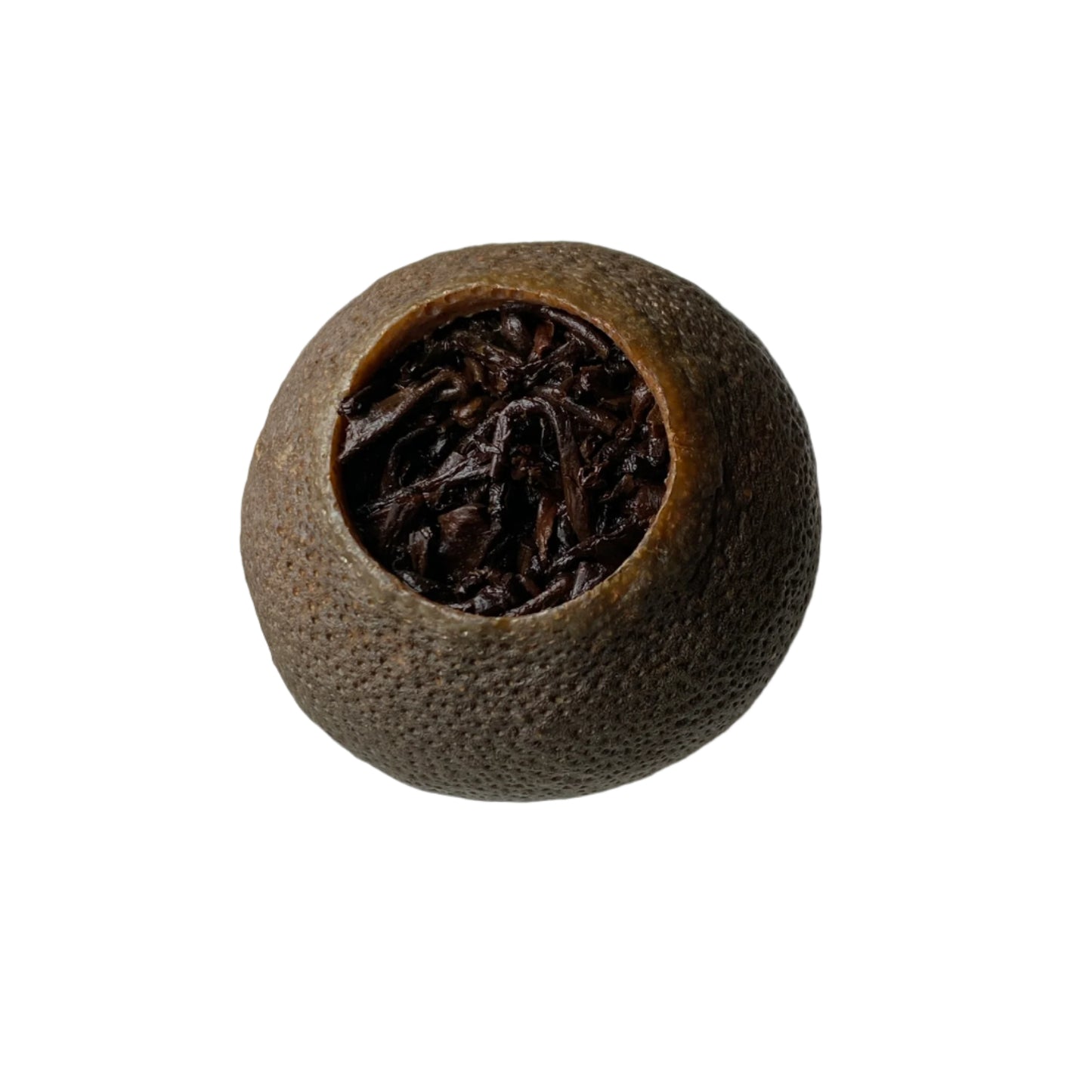You Cai
2010/2017 Xiao Qing Gan “Little Tangerine” Shou Pu'er
2010/2017 Xiao Qing Gan “Little Tangerine” Shou Pu'er
2010/2017小青柑熟普洱
Couldn't load pickup availability
Specifications
Specifications
Origin: Tianma village, Xinhui, Guangdong Province & Menghai county, Xishuangbanna, Yunnan Province, China
Elevation: 1300-1500 m
Cultivar: Da Ye Zhong
Harvest time: 2010 for tea; Summer 2017 for tangerine
Source: Custom-Processed by You Cai
Xiao Qing Gan (小青柑), or "Tangerine Pu-erh," is a unique combination of two celebrated ingredients: unripe Xinhui tangerines from Guangdong and Ripe Pu-erh tea from Yunnan. This tea is crafted using young Xinhui tangerines, harvested in July and August from Xinhui, Guangdong Province—a region renowned for producing the highest quality chenpi (sun-dried tangerine peel), a traditional ingredient in Chinese medicine and cuisine.
The tangerines are thoroughly cleaned, hollowed out to remove the pulp, and then filled with Ripe Pu-erh tea. After sealing the opening with the tangerine peel, the tea-filled fruits are naturally sun-dried, preserving their strong citrus aroma and allowing the flavors to meld with the earthy richness of the Pu-erh. The tea can then be aged to further enhance its complexity.
The Ripe Pu-erh used in this tea is Gong Ting grade, made from tender tea leaves harvested and fermented in 2010 in Menghai County’s Gelanghe area. The tea base was carefully aged for seven years before being combined with the young tangerines in 2017. This pairing creates a perfect harmony, blending the deep, smooth notes of the Pu-erh with the lively, refreshing citrus fragrance of the tangerine peel.
A white, frosty substance may appear on the tangerine peel, known as Gan You Jing (柑油晶), or “citrus oil crystals.” This frost forms from the volatile oils in the peel during the traditional sun-drying process. The primary component, limonene, has a refreshing, lemon-like aroma and crystallizes on the peel’s surface through natural oxidation. This effect is common in young green tangerines, which are rich in terpenes. The gentle sun-drying preserves these oils, allowing them to crystallize, whereas high-temperature roasting, often used in modern techniques, destroys the oil glands and prevents frost formation.
Share
